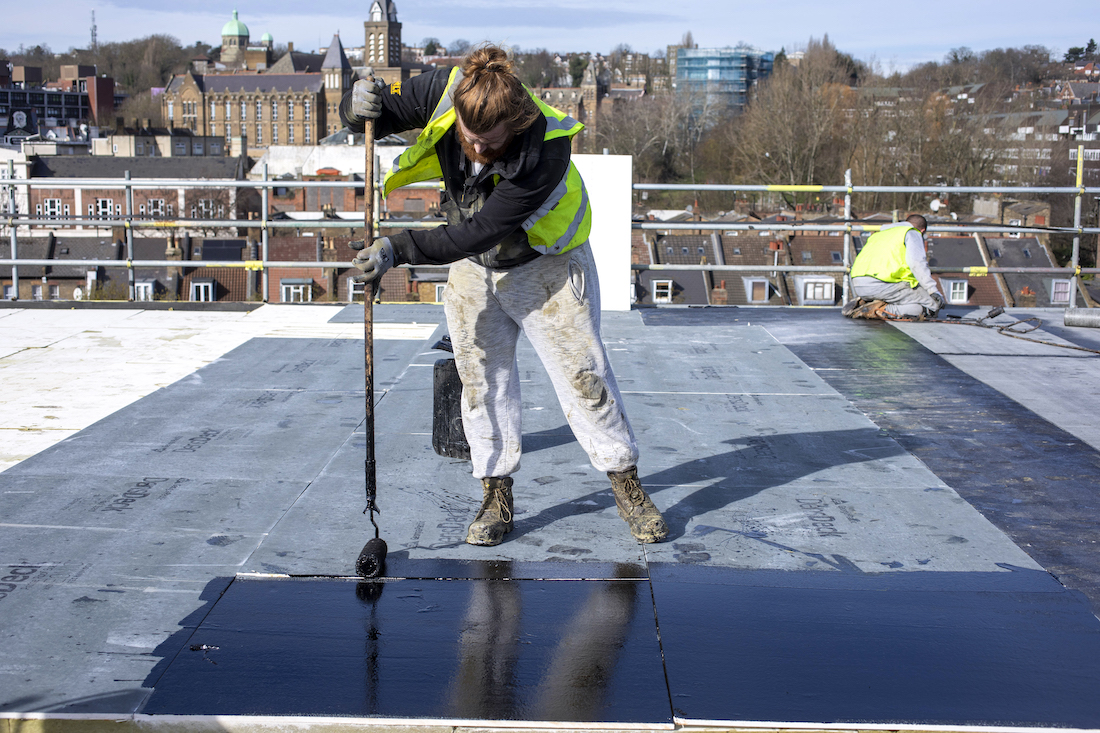What is a fire board used for?

Fibreglass mat facer gypsum cover boards have a variety of performance benefits within a roofing system, but one of the crucial benefits is that they are used to increase the fire performance of roof build-ups. Therefore, they are often simply referred to as fire boards. Both gypsum and fibreglass are classified as non-combustible materials. When used to manufacture cover boards, they help the board withstand significant heat and large temperature and moisture changes. For example, DensDeck® Roof Board is classified as A1 in accordance with EN 13501-1 and non-combustible as described and tested in accordance with ASTM E136.
Fire boards can be installed as cover boards, positioned above the insulation layer and below the waterproofing layer such as TPO, PVC, EPDM, Modified Bitumen, and Hot Mopped Bitumen. They can also be used as roof boards, fixed onto the roof deck below the insulation layer. Gypsum boards are light and easy to manoeuvre and install. Unlike cementitious boards, they can be easily cut to size on site. The boards can be installed and customised without the need for specialist equipment.
The performance of the fire board in these two positions will differ slightly. It is good practice to use fire boards in both cases. We will examine the two options in more detail.
Fire boards installed as cover boards
Installing a fire board in a cover board position helps to limit the spread of flame from neighbouring buildings and across the roof and prevent the penetration of flame to the insulation layer and building interior. This can help to increase the fire performance characteristics of the overall roof build-up.
The function of cover boards is not limited to fire protection. They increase the structural strength of the roof assembly and improve the acoustic performance of the roof system. Cover boards also form a homogenous substrate that makes the installation of mechanically fixed, adhered, and part adhered roof coverings easier. In addition, fire boards have a high level of moisture resistance and protect the building envelope from moisture ingress.
Fire boards installed as roof boards
When installing fire boards as roof boards, over the roof deck and below the insulation layer, the board can slow internal flame spread and protect the layers of a roof build-up from fire. As is the case with a cover board, the fire rating of the roof build-up can be improved through the specification of a high-density gypsum roof board with fibre glass mat facer.
When installed on top of uneven surfaces, such as profiled steel decks, roof boards also protect the insulation layer from damage and keep it in position. Roof boards form a high performing vapour barrier that protects the building envelope from moisture penetration and mould.
Fire performance of DensDeck® Roof Boards
Gypsum as used in DensDeck® Roof Boards, comprise up to 21% chemically combined, crystalised water and 79% calcium sulphate. This means that a 2,000m2 roof covered with a 15.6mm fibreglass mat gypsum cover board contains roughly 5,682 litres of crystal water. In the event of a fire, this water gradually releases as a vapour that slows the burning of organic materials. The fibreglass mat facer is the first line of defence should fire break out.
DensDeck® Roof Boards are particularly suited for specification as fire performance boards in mission critical sectors, where facilities must operate 24/7 without interruption, such as datacentres, biotech centres and buildings designed for public use. DensDeck® Roof Boards are FM (Factory Mutual) tested and approved building materials, tested and classified to have A1 reaction to fire, in accordance with BS EN 13501-1.
You can find out more about the fire performance of DensDeck® Roof Boards here or contact us if you would like to discuss specification benefits for your project.
Contact Us
Start your project or simply get specification advice by dropping us a message.
One of our team will be in touch as soon as possible.